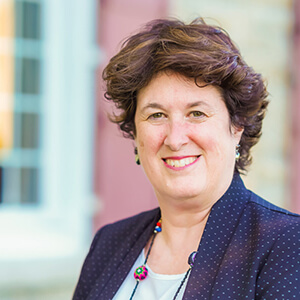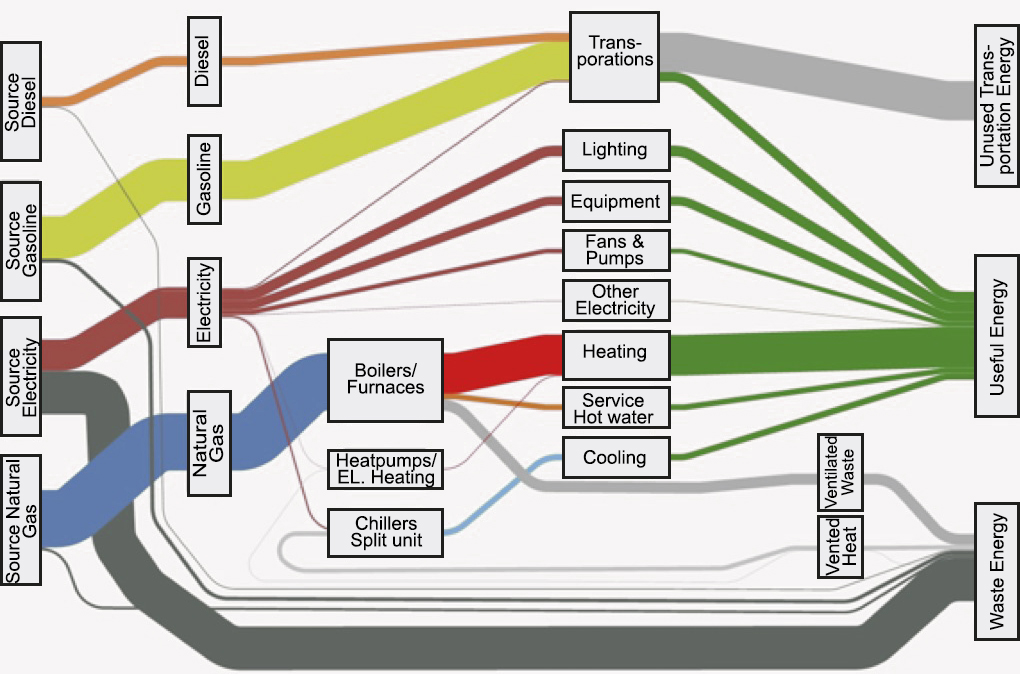Blog
Leveraging the Great Pause – Accelerating our Smart Energy Transition
The Canadian government has signaled its intention to tie investments to rebuild the economy – post pandemic – with their ambition to deliver a climate-neutral economy by 2050.
This makes good sense – feed two birds with one seed.
My observations on this challenge come from the potential of the energy sector and more specifically – Smart Energy Communities.

While upstream and downstream investments in our energy system are necessary, they won’t be enough without “mid-stream” investments that enable the changes required to our current energy system to integrate community-scale energy solutions while optimizing the value of existing energy infrastructure.

I will use examples from municipalities in Southern Ontario who are striving to become Smart Energy Communities. Their barriers are not the lack of technological solutions, but the absence of governance and business models to support their deployment at the scale that is needed.
My observations are also informed by QUEST’s technical principles, which provide the framework my colleagues and I use to help communities identify their priorities to reduce energy use along with emissions and costs.
Specifically, I will bring your attention to three of QUEST’s six technical principles – maximizing end-use energy efficiency, managing heat, and using renewable energy resources – and focus my remarks on the market transformations necessary to enable Smart Energy Communities.
Town of Oakville
Take the Sankey diagram from the Town of Oakville as an example. It illustrates energy flow through a community. My colleagues and I use this illustration to start a conversation in a community.
On the left is source energy – from top to bottom, diesel, gasoline, electricity, and natural gas. Immediately to their right is site energy – the energy that arrives at the utility meter or the pump.
Just right of centre are end-uses and to the far right – from top to bottom – unused transportation energy in grey, useful energy in green and waste energy, once again, in grey.
Communities are seeking solutions to use energy more productively. They also want to reduce waste energy which means looking behind the meter at where and how we get and distribute energy.
Town of Oakville – CEP – Energy Balance – Baseline 2016
Source: Town of Oakville – CommunityEnergy Strategy
Maximizing End-use Efficiency – The Residential Retrofit Market
Turning first to maximizing end-use efficiency, improving the energy performance of existing homes and buildings is always identified as the top priority in a community energy plan.
This is consistent with QUEST’s first principle to maximize end-use energy efficiency. It is also consistent with what the data tells us about the technical potential in the Canadian market for improving residential energy efficiency.
For context, Canadian residential energy use is approximately twice that of the global best practices found in Germany or Denmark.
However, there are well-documented barriers to achieving the technical potential in the residential sector. Decades of energy retrofit programs have valiantly and creatively tried to address these barriers but have been consistently stymied by low market penetration.
The challenge we face is that the market is dysfunctional. In a disaggregated market, the transactional costs remain too high to make a retrofit attractive to the homeowner or the retrofit contractor.
Municipalities are furiously preparing submissions to the Federation of Canadian Municipalities’ Community Efficiency Financing program, a new $300M initiative to help municipalities and their partners’ design, implement and scale-up innovative financing programs that will help residents improve the energy performance of their homes, save money on energy bills and reduce GHG emissions.
Municipalities are considering a variety of financing and utility on-bill financing programs are being worked up. Some municipalities are looking to develop their own retrofit programs. Some are looking to partner with a non-profit service provider. Others are looking to be a channel partner for existing utility programs.
We will have a bewildering cacophony of well-intentioned programs, which are bound to make some contribution, but which are all pinning their hopes on the same dysfunctional market that has always stood in the way of achieving the scale they need for success. Municipalities need more support to drive market transformation. They are not currently equipped to deal with this responsibility.
As a nation and as an energy sector, how might we better support municipal aspirations? How might we invest in the development of new governance and business models that will aggregate the residential retrofit market and realize the scale that investors and governments are clamouring for?
Manage Heat – The Missing Utility
Next, I will turn to the principle of managing heat which predominantly focuses on this part of community energy flow – waste energy in grey.
The United Nations Environment Program has identified district energy systems as vital infrastructure for more sustainable cities and communities and a most effective means to decarbonize urban energy infrastructure.
In a world, hyper-focused on carbon, positioning the role of natural gas in the energy transition can be one of our more challenging conversations with a community. However, with its focus on energy performance, community energy planning is “source neutral” and this better positions us to promote another QUEST principle – use existing energy delivery systems strategically.
As of 2016, about 3000 buildings in Canada were served by district energy systems. So, let’s put that statistic – and the opportunity – into perspective.
Canada has only 350 km of district energy networks for about 33 million people while Mannheim in Germany has over 500 km for about 300,000 – 350 km in Canada, 500 km in Mannheim. Those 3000 Canadian buildings would fit into a few blocks of Mannheim. This is a missing utility in Canada’s energy system.
Community energy plans always identify the opportunity for district energy systems to improve local energy performance. The business case is being made in urban centres across Canada. However, the lack of enabling governance models is compromising large-scale implementation. And like the energy retrofit market, the transactional costs in the North American market are higher than Europe and will remain so without scale and leveraging European best practice.
At the turn of the last century, civic leaders didn’t just invest in new infrastructure – the provincial electricity grid – they also developed new governance and regulatory models to support the growth of the new energy system, including establishing the Hydro-Electric Power Commission of Ontario – known as Hydro One, today.
What investments should we be making to lay the groundwork for a thermal energy market in Canada?
Deploying Renewable Energy – Localization
The final area where I want to focus is upstream – the deployment of renewable energy.
Primary sources of energy for electricity generation are diversifying and going local. Upstream will be closer in the future. How are we preparing for this shift?Understanding scale is everything in community energy planning and the opportunity for renewable energy – at least at this time – is limited in urban centres. However, in rural communities, this conversation is quite different. Farmers not only feed cities, they are fueling cities.
If we learned anything from Ontario’s experience promoting renewable energy generation, it was don’t exclude local communities from the decision-making process.
As renewable energy technologies continue to become more cost effective, the pressure will only increase – and legitimately so – to include local stakeholders in energy decision-making and to promote a mutually-beneficial energy transition.
Renewable energy planning collides with land-use planning – a municipal responsibility. Empowering communities by engaging them in collaborative planning processes will include them in defining the risks and benefits of renewable energy projects.
While new practices are beginning to emerge – QUEST’s Accelerating Implementation of Renewable Energy project is a good example – this work needs to be institutionalized and not ad hoc. The absence of collaborative governance models is slowing the development of land-use policies that will enable the renewable energy market.
How might we invest in building stakeholder capacity for collaborative planning? What new decision-making processes will accelerate social acceptability and the inclusion of renewable energy projects on the landscape?
Where to go From Here
Collectively, community energy planning in Canada is pointing the way to a new energy future. One of the biggest challenges is that talking about infrastructure – like district energy pipes – is not sexy and talking about capacity building and governance models is a thousand times worse.
These challenges will become even harder to overcome now that our municipalities have less capacity than ever before and will take time to recover from the impact of the coronavirus on their revenues.
But these are the conversations that we need to have to ensure that we are successful. We need to ask ourselves:
As a nation, or as a sector, are we demonstrating similar foresight to support the rational transformation of our energy system over the next 30 years as local leaders did over a century ago?
Are we building the governance and business models that will build the future energy marketplace?
Are we creating the platforms we need for sharing data to accelerate innovation?
Are we proactively building the capacity of new energy stakeholders to engage in transformative collective action?
Sign Up
Join the Conversation!
Sign up to get the latest news and updates about QUEST Canada events and receive QUEST Canada's monthly newsletter.


